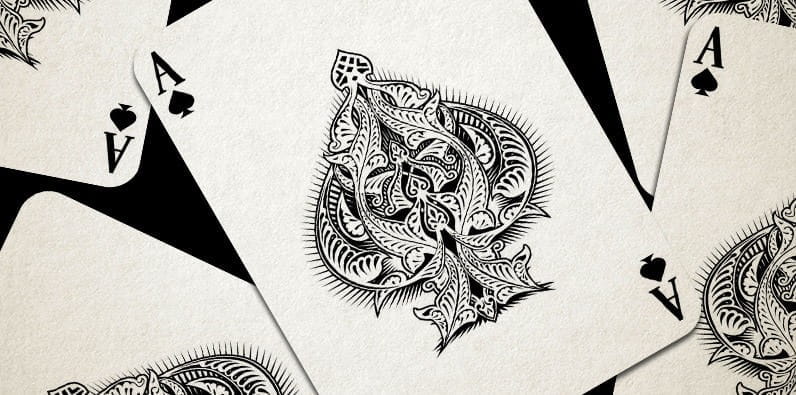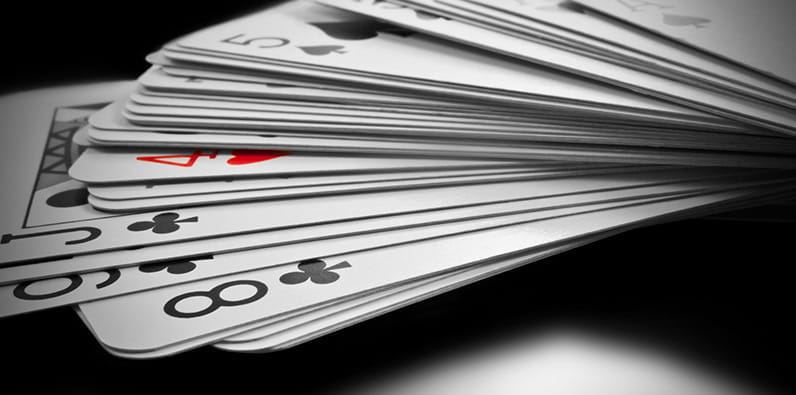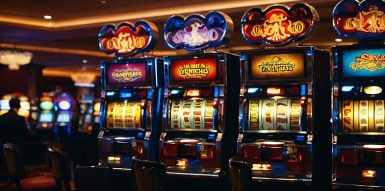#1 If You Like Numbers…
If you’re a fan of numerology, you’ll have a field day when you hear those curious facts. We all know the standard deck consists of 52 cards but have you thought that this number corresponds to the number of weeks in a year? And that’s not all… There are 4 suits just like there are 4 seasons in a year or 4 weeks in a month. The suits correspond to the 4 natural elements with hearts being water, clubs – fire, spades – air, and diamonds – earth. There are 12 court cards to represent the 12 months or 12 star signs. There are 13 cards in each suit to represent the 13 phases of the lunar cycle or 13 lunar months in a year. Finally, there are two colours – red recalls the day and black – the night.
#2 It’s a Man’s World!
As we have already mentioned in our post on the history of cards, the early decks of cards had no queens and no female characters in general. They featured a king, a knight, and a knave (which later became the jack). Though female-fronted cards appeared from time to time prior to the 15th century, they only became a staple in the French cards. Moreover, the Paris pattern associated their faces with those of famous queens from history and mythology.
#3 The Making of Cards
When we think of cards, we all think of rectangular pieces of paper with a glossy finish. Ironically, none of these three characteristics was present in the early cards. The first cards were made of ivory tiles and were played in a way similar to dominos. Indians used circular cards. When they arrived in Europe, cards were hand-made and painted by hand and they were owned only by the elite. They didn’t have either round edges or high-gloss varnish. They couldn’t be reversed, either. Cheaper printing methods gave rise to card playing. For instance, the Germans used wooden blocks to print cards, which allowed for more decks to be produced and sold at a better price too. But can you imagine playing with such cards… Luckily, the world developed. Today, cards can be made of plastic or paper. To make cards, layered paper is used – thus the product is not only more durable but it also guarantees that the players can’t see through them. And of course, online gambling made things even easier but let’s go back to the topic, shall we?
#4 An Instrument of the Devil?
With playing cards taking over Europe, the church took charge and banned them on the grounds that playing cards led to other vices. You see, the widespread of cards led to a rise in gambling. Not that gambling was a new thing. In fact, up to the 18th century, it was common for people to only play games with wagers (by the way, you can check our gambling games list. The church forbade playing cards – it led to drunkenness and fighting, they said. For instance, in the 15th century, the English parliament made playing cards illegal except on the 12 days of Christmas. Luckily, in the 17th century, a company asked the king for an exception which was granted by King Charles I in 1628. In return, however, the king imposed a tax on each deck of cards, which led to an increase in the price of a pack of cards – it soon went up to £16.
#5 Not Playing with the Full Deck
The above-mentioned tax stamp led to other significant changes, apart from inflating the price for a deck of cards. It accidentally brought the ace of spades into the spotlight. Paying the tax meant getting a stamp. Since aces have the most room on their front, it was the ace of spades that got the stamp. However, people weren’t excited about paying a large sum of money for a deck of cards and some manufacturers tried to bypass the tax by selling decks without the ace of spades in them. That’s how the phrase ‘not playing with the full deck’ was born. It used to mean just that but today this card-inspired idiom is used to describe someone who is crazy or not very bright.

#6 The Mighty Ace of Spades
But there’s more to say about this legendary ace. It was particularly important for the U.S. army. First, it played a role during WWII when it was painted on soldiers’ helmets in order to bring them good luck. Then, it was used as a scary symbol during the Vietnam War. Americans believed the card was a sign of bad luck to Viet Cong soldiers. It’s actually unclear if that was based on any fact and, unfortunately, there are no written records of this practice, but it’s a widespread story that soldiers ordered crates of aces of spades and used them to demoralise the enemy.
#7 Unusual Uses of Cards
Using cards for playing is logical but what other uses can cards be put to? Well, if you imagine the times when cards became an obsession, you’d undoubtedly realise paper was not so easy or cheap to get. That’s why cards were often used as a means of conveying a message. Moreover, their backs were blank, thus leaving room for notes. Some of the unusual uses of cards include love letters, invitations, and coupons. Perhaps the most heart-wrenching story goes back to 18th-century Netherlands when poverty made mothers leave their babies at the doors of the local church. The mothers would usually leave a card – the cheapest paper – with their beloved, hungry baby, with the name of the child and plea for help. The most inspiring story, on the other hand, is the one with the American government sending imprisoned soldiers in Nazi camps hidden maps. During the Second World War, many prisoners of war got a deck of cards – when wet, these would peel to reveal parts of an escape map. Quite a number of U.S. prisoners managed to escape thanks to playing cards.
#8 Cardistry – The Artistry of Cards
Luckily, we don’t need to resort to cards when in need of a piece of paper nowadays, though, I must admit, getting an invitation that’s hand-written on an ace sounds awfully sweet and personal. Today, there are other fun things you can do with cards and though magic tricks are some of them, I’m talking about cardistry. The term combines the words ‘card’ and ‘artistry’ and refers to the performance art that’s visually impressive and appears almost impossible to do. It’s hard to explain, so have a look at this video instead.
#9 How the Joker Was Invented
Originally, there was no joker in the deck of cards. But towards mid-19th century, in the United States, it appeared as a trump card in the game of Euchre. A trump card is a card which is elevated beyond its usual value. Euchre is actually a variation of the Alsatian game Juckerspiel. Alternative theories claim the roots of the joker are in Italian tarot cards where there’s a card called the Fool. Irrespective of its origin, the joker is here to stay as contemporary 52-card decks usually feature 2 or 3 jokers.
#10 Fun Facts
Now that we’ve disclosed 9 not so well-known facts about playing cards, we’ll wrap it all up with a few interesting facts. Those are just tidbits of information that have nothing in common, except that they all have to do with cards:
- Have you looked at the 8 of diamonds? Now, look at it again and you’ll see that apart from the obvious 8s, there’s one formed by the pits – yes, it’s in the negative space.
- Many people build houses of cards but there’s one that has a Guinness World Record for the tallest card tower. Bryan Berg, a professional card-stacker, has an official record from 1992. Since then, he’s broken his own record.
- In Japan, there’s a Hanafuda card deck, which has 12 suits and 4 cards in each suit. Yes, the roles are reversed. Moreover, in this deck there’s no guessing as to what the 12 suits correspond – they clearly represent each of the months in a year.
- If you have a deck of cards, ordered by colour and suit, A to K, and you make 8 perfect out Faro shuffles, you’ll have them in their original order. If you’re wondering what a Faro shuffle is and how to do it, here’s a how-to video for you.
Unfortunately, all good things usually come to an end and this is the case also with our article about the interesting playing cards facts. And while you might be a bit disappointed, you can dry your tears and see which are the best blackjack sites in the UK where you can play and also master some card tricks like counting and so on. Have a great time and we will see you in our next blog!



